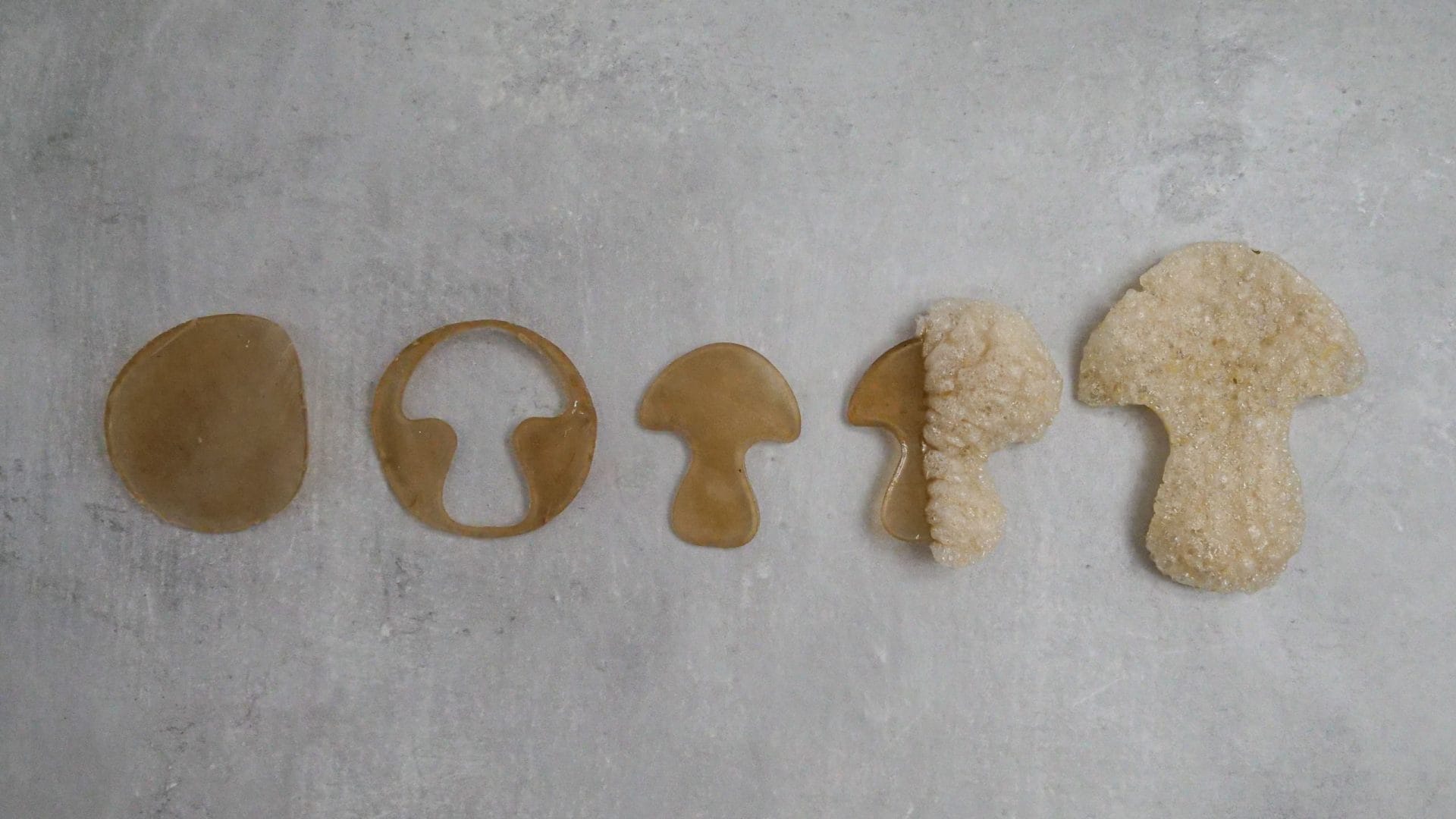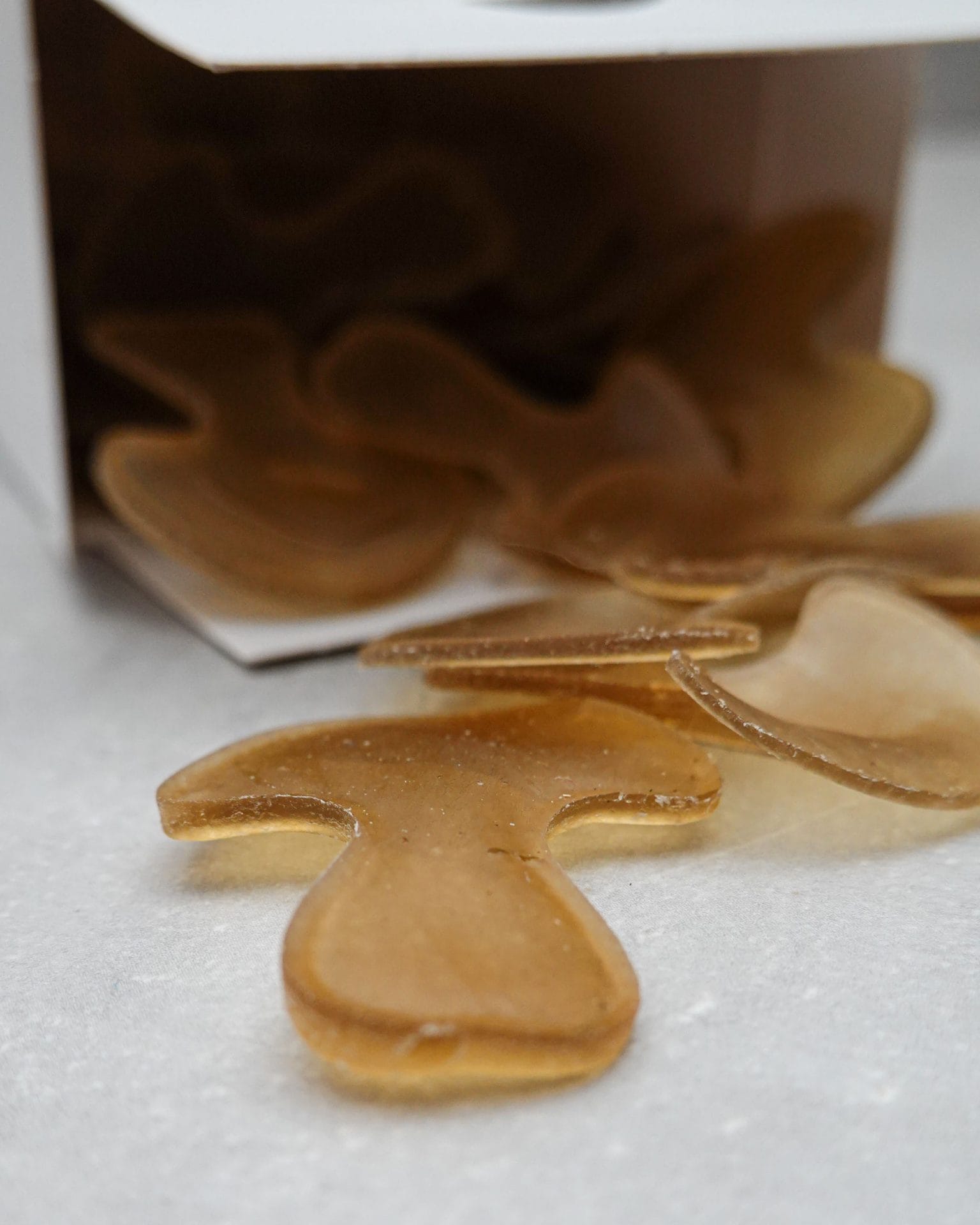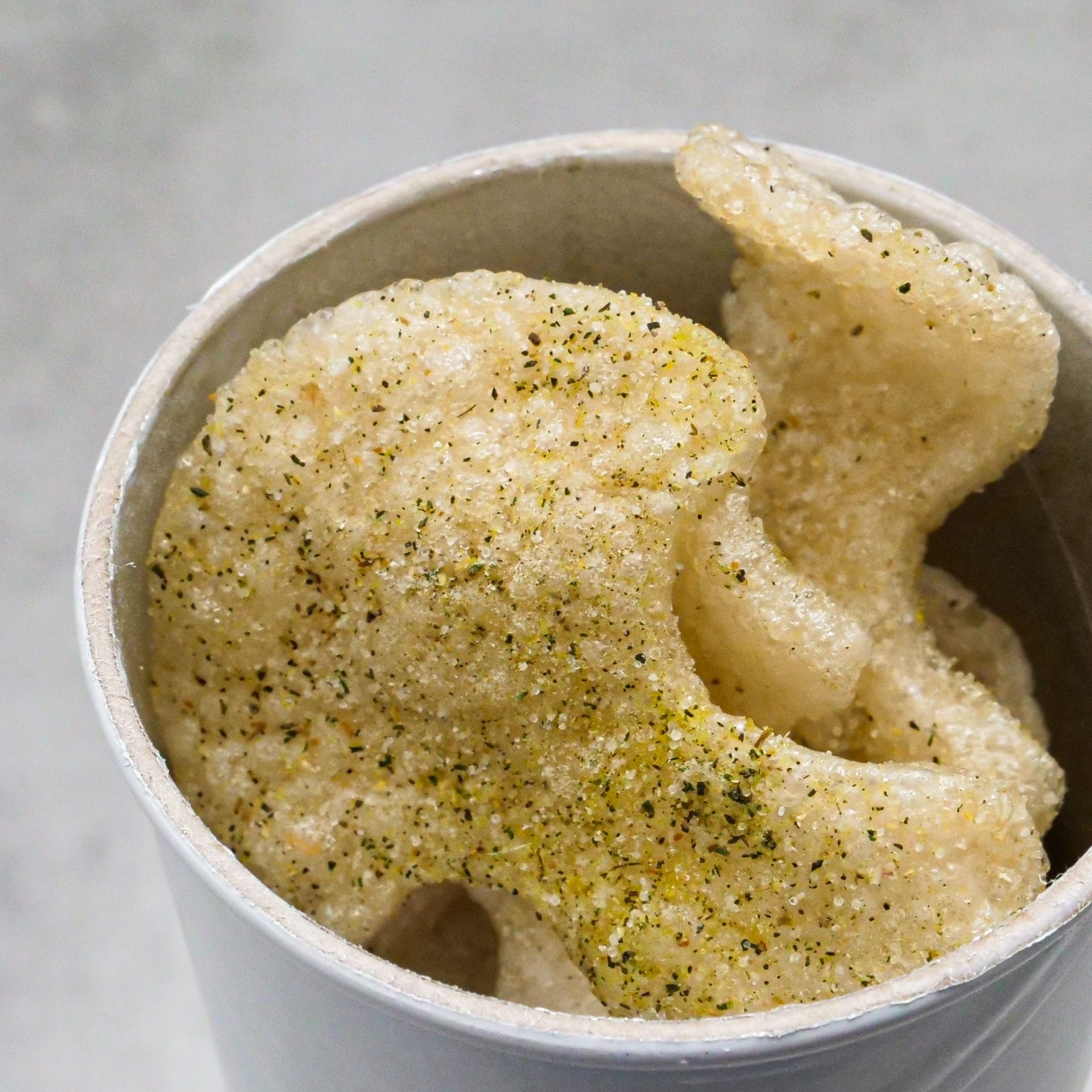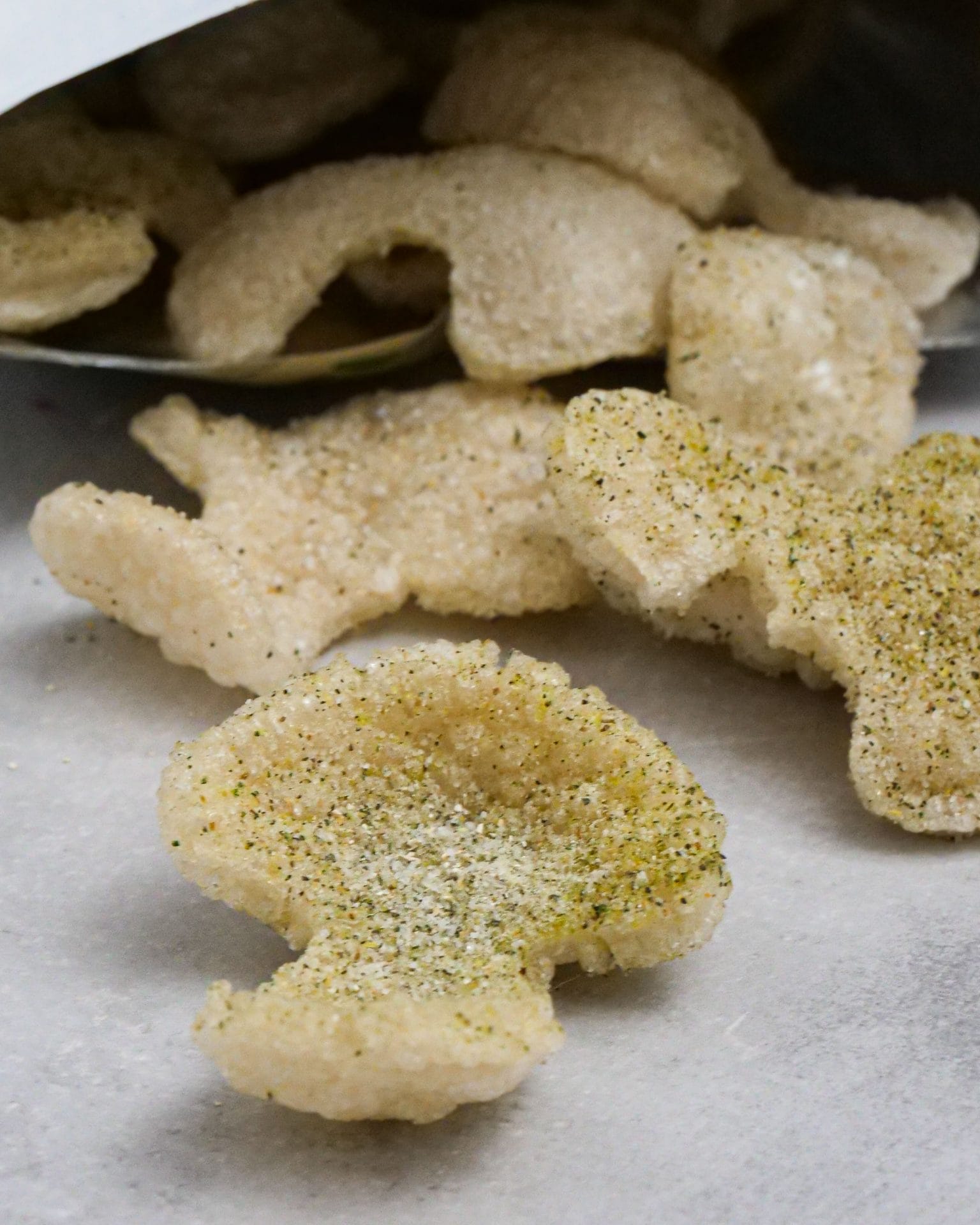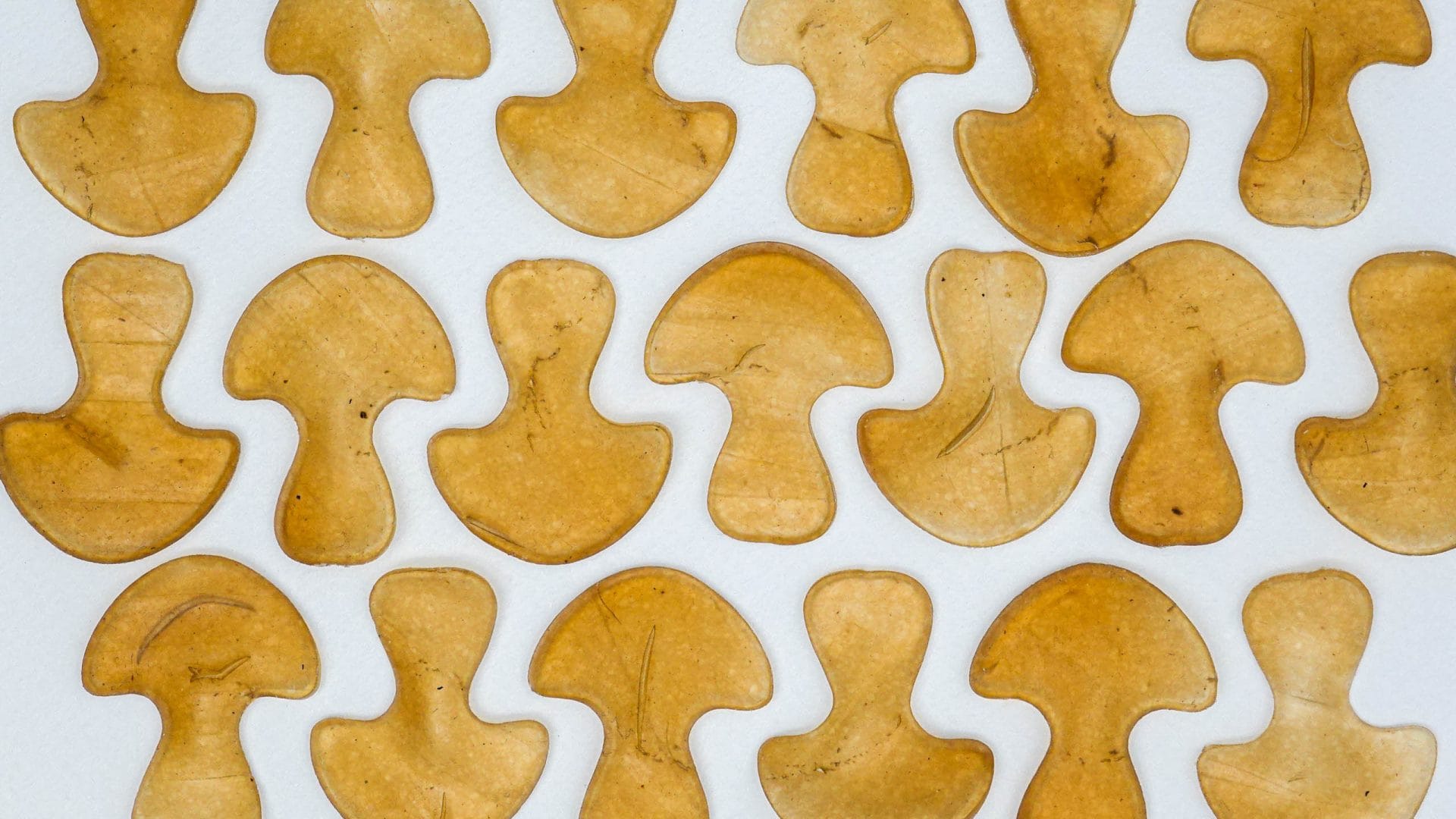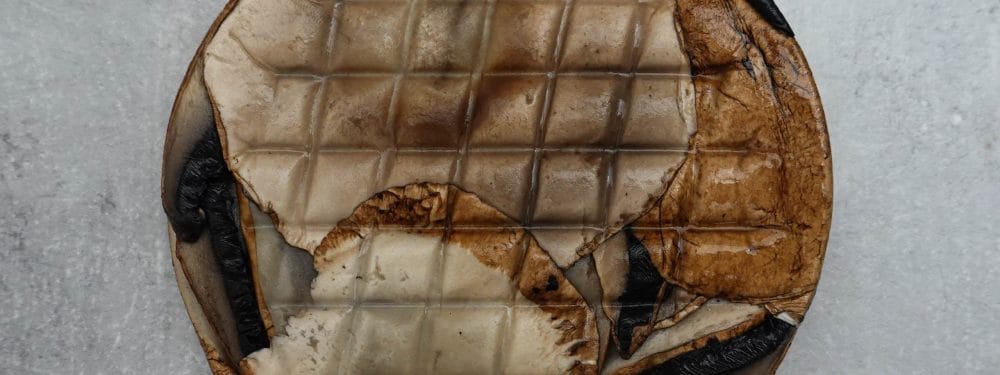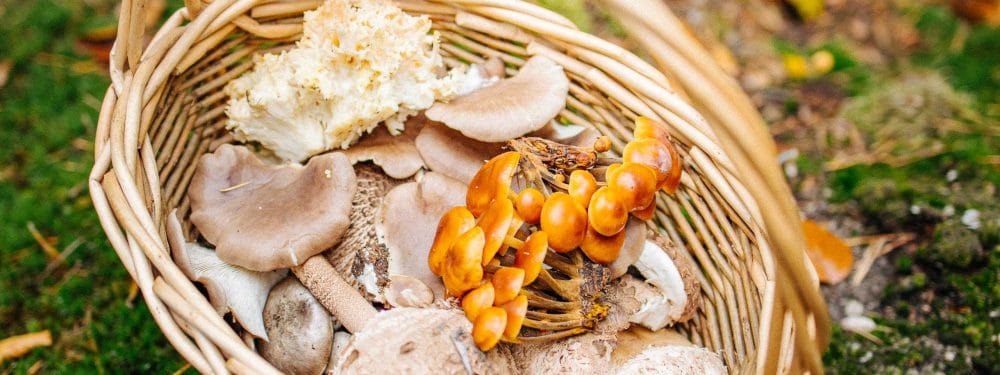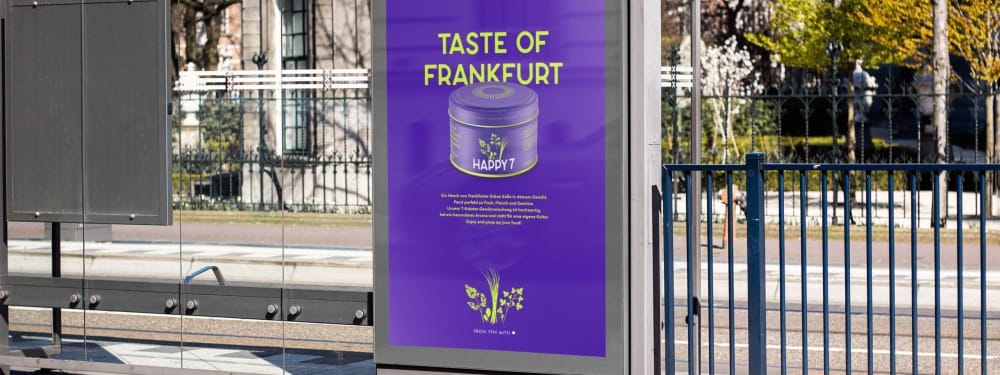The mushroom snack or the power of packaging
After mushroom foraging and mushroom patty, all good mushroom things are at least 3. We had mushrooms left over from the patty experiments and dried them in our dehydrator oven. For us, Taste the Waste means developing a snack with umami seasoning based on dried mushrooms. This creates a vegetarian snack that is not only crunchy delicious like chips, but has the addictiveness factor of greasy, animal pork beef.
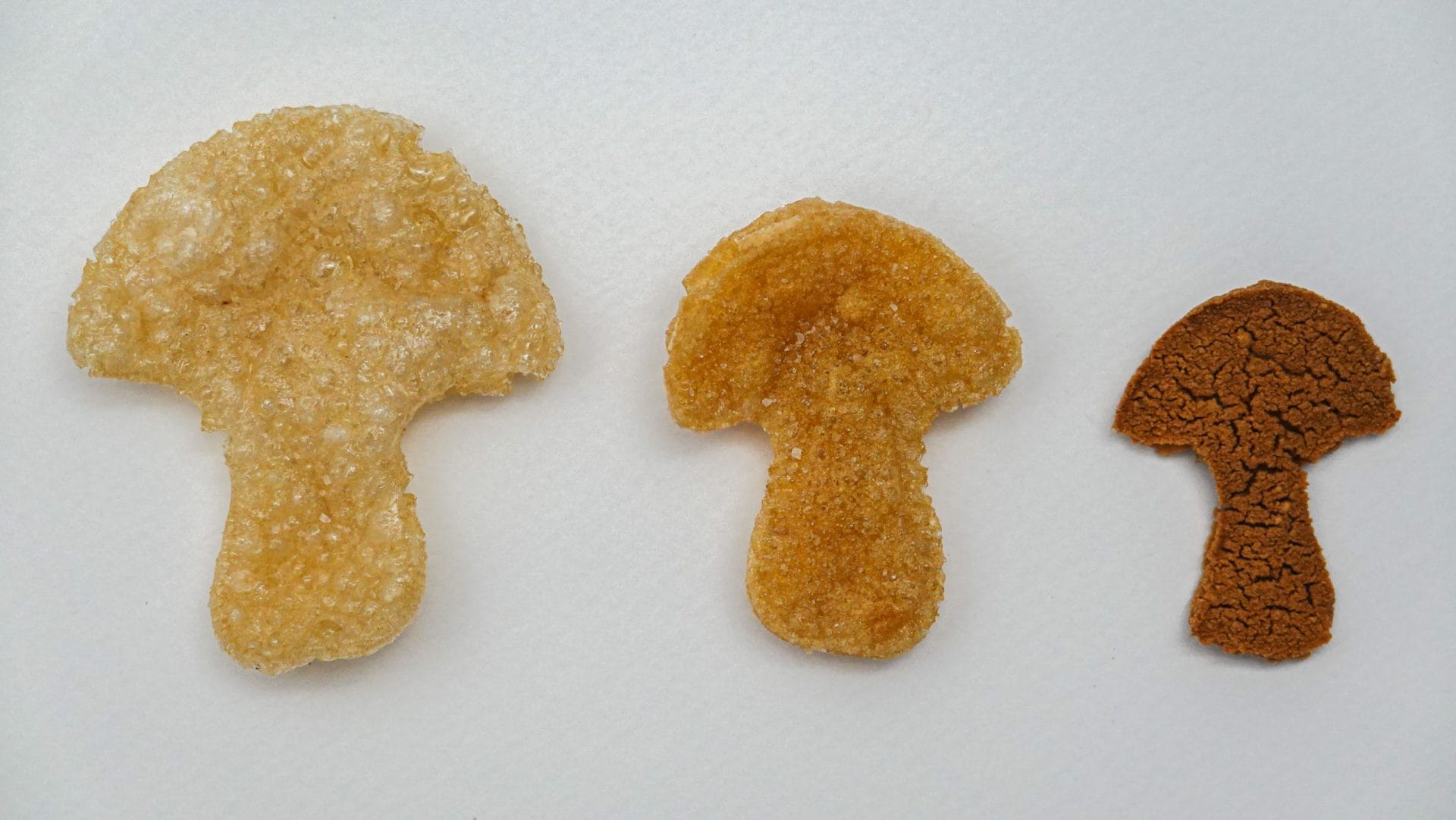
Multisensory recipe development
In the development of our products we are concerned with an innovative concept and very good taste. But taste and aroma is never only what happens directly in the mouth and nose. Taste develops much earlier. This has to do with our socialization, with the food culture in which we grew up, and more concretely with the associations we make with a food. These associations may also be influenced by advertising. In the case of snacks, we associate Pork Rinds with an animalistic, greasy, flavor image. To emulate this, however, it is not enough just to imitate the taste. A snack product that tastes like the original but looks nothing like it is not a successful imitation. So taste is always about the appearance, texture, temperature, or even sounds of a food. Everything works together, because eating is a multisensory experience. Especially with snacks like chips, sounds are very important. Why? We associate freshness with the crunch of eating chips. The louder the sound, the fresher the chips seem to us. If the sound is absent, the enjoyment is also reduced; we associate this with old, softer chips.
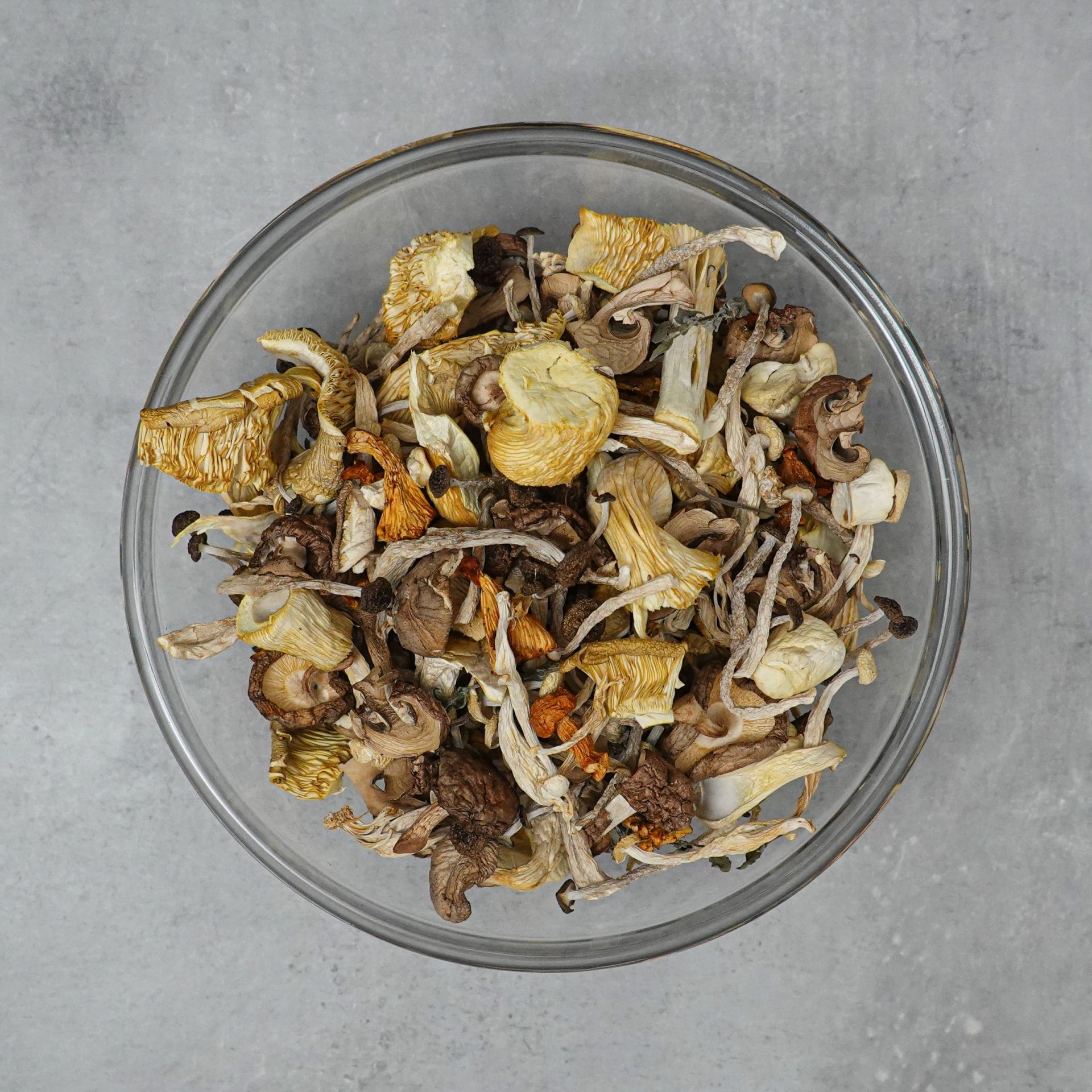
The multisensory nature of food is even more complex, because the environment also has a significant influence on our perception. And the environment includes not only music, temperature, colors, people…. also the packaging. Packaging is therefore partly responsible for how we evaluate a product. Here again colors, textures, shapes, etc. play a role. For example, the color of a potato chips packet influences taste perception. If a taste is associated with a certain packaging color, e.g. red with that of bell pepper chips, this taste is perceived even if a completely different variety was put into the bag, as the psychologist Charles Spence found.
We have tried such influences on wine ourselves and, as a packaging design agency, are naturally interested in understanding and making the best use of this “power of packaging”.
Mushroom crab chip
But now back to our mushroom snack. So the should not only convince with depth of flavor, but also visually remind you of snacks that are special in taste. Thus, through the appearance, we also enhance the taste of our snack. To do this, we make a mushroom snack based on starch. Like Krupuk (crab chips), the can be deep fried and when popped reminds one of the crispy crunchy Pork Rinds made from pork rind.
As a first step, we pulverize the mushrooms into a fine flour. We mix this with sea salt and refine the mixture with dried vinegar powder. Then we cook a mushroom broth from fresh mushrooms, which we reduce to 1/3 of the amount to concentrate the flavor.
The strength of… Strengths
We try three different variants as a starch base:
- Tapioca starch (the classic base for Krupuk)
- Glutinous pulp
- Potatoes
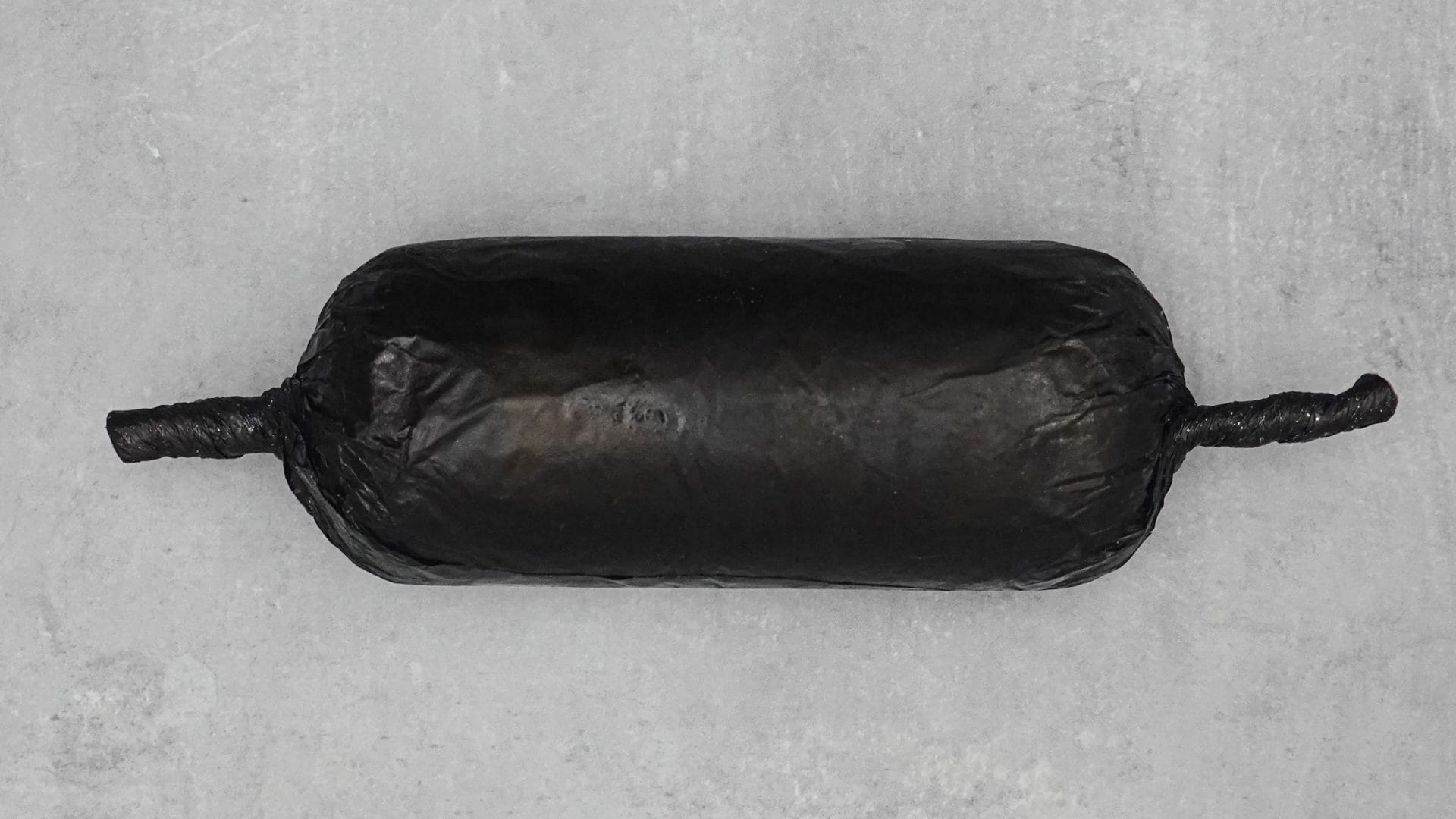
We start with the tapioca starch and for this we mix the starch with the mushroom broth, salt and egg white. Then we wrap the thick mass in cling film and then in aluminum foil. We now boil the “starch sausage” for one hour in lightly simmering water. The mass becomes solid, because the starch has absorbed all the liquid during cooking. This is also how crab chips are made, except that in our case the flavor comes from mushrooms rather than crabs.
For the 2nd variant we use glutinous pulp flour. From the recipe it behaves exactly the same as our first version. Again, we cook this mass in boiling water.
Pom mushroom
For the 3rd variant, we follow the thought of a large manufacturer who has launched small potato bears on the market. On the basis of potatoes, potato starch, our mushroom essence, soy sauce and salt we make a mass, which we spread, dry and then deep fry. For this we boil and mash the potatoes, mix them with starch and season the mixture with mushroom essence, soy sauce and salt. From foam rubber we cut out a mushroom shape, so we can shape the mass and at the same time make sure that each mushroom has the same weight and thickness. And, of course, the shape can again affect the taste, because we already thereby awaken mushroom associations. We leave the spread “potato-mushrooms” to dry in the drying oven for 8 hours at 45 °C.
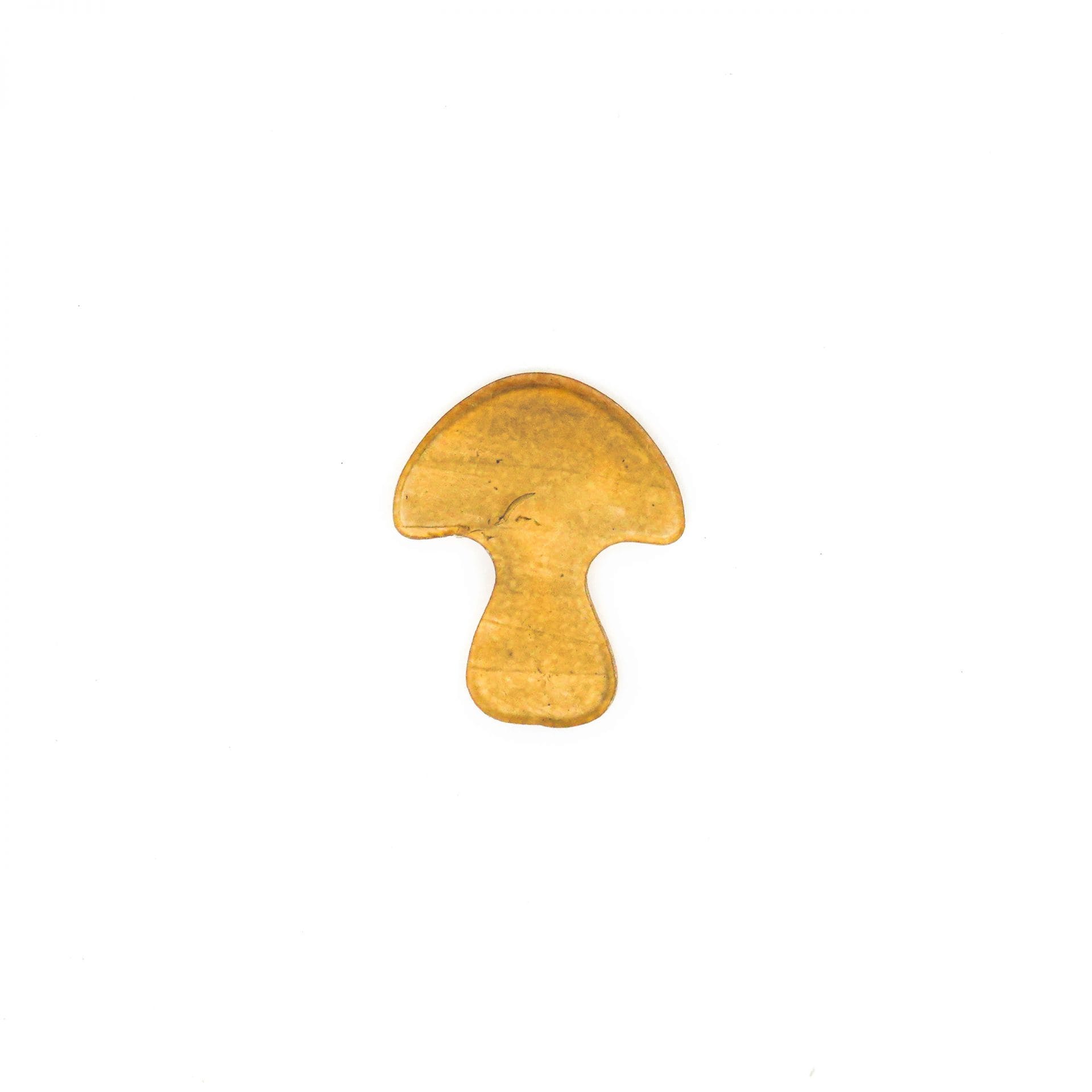
After cooking, we free the tapioca mixture and glutinous rice mixture from the foil, cut them into 2 mm thick slices and cut them out with a mushroom cutter. Then we put them in the drying oven to dry them at 45 °C for 8 hours as well. The mushroom chips must dry but retain a residual moisture so that they puff up evenly and with fine pores. We deep-fry the dried chips for a few seconds in very hot vegetable oil, degrease them briefly and then sprinkle them with the mushroom seasoning salt.
The power of packaging
Finally, we have three different chips made from tapioca, glutinous rice flour and potato. Our favorite is the variant with the tapioca starch. Texture, mouthfeel and taste were convincing. The sticky rice unfortunately didn’t puff as well as the potato mushroom.
Our snack can be enjoyed as Mushroom Chip, Crab Bread or Pork Beef. What it is perceived as is essentially determined by the packaging and the associations it arouses. Aromatically, of course, you can additionally control but the power of packaging alone sometimes works wonders.
